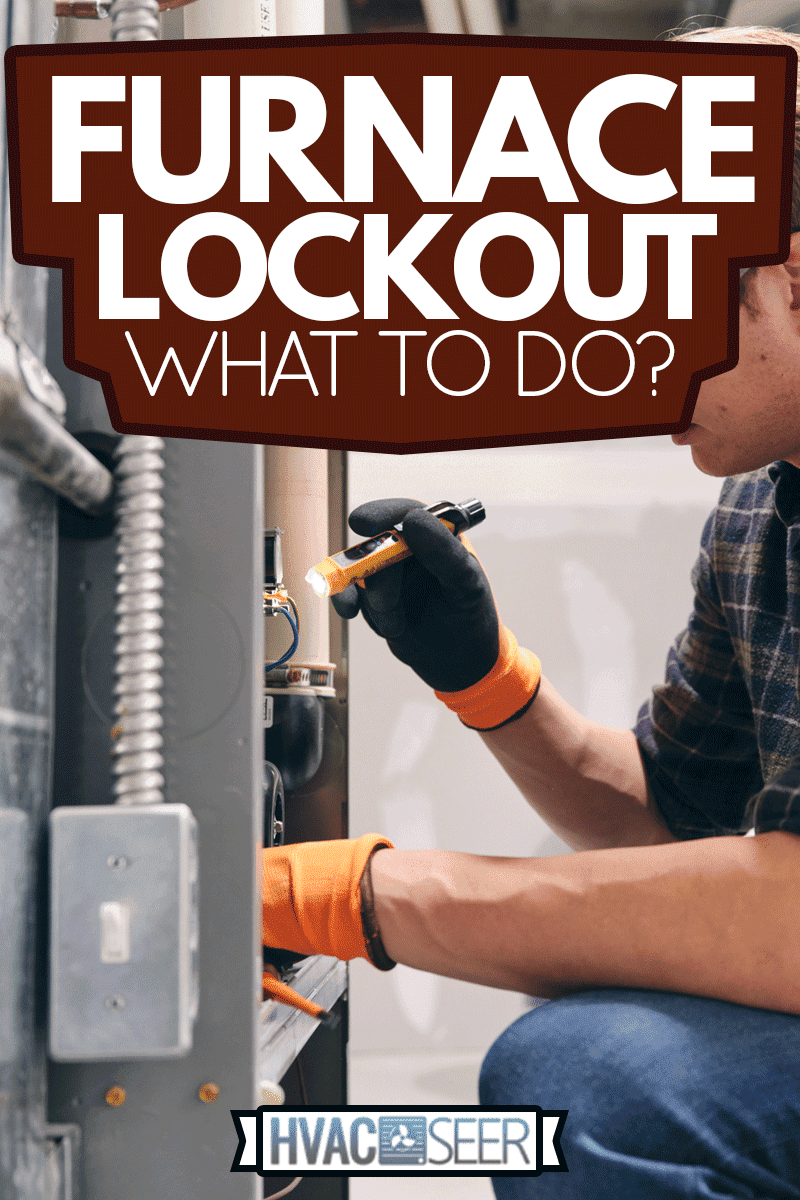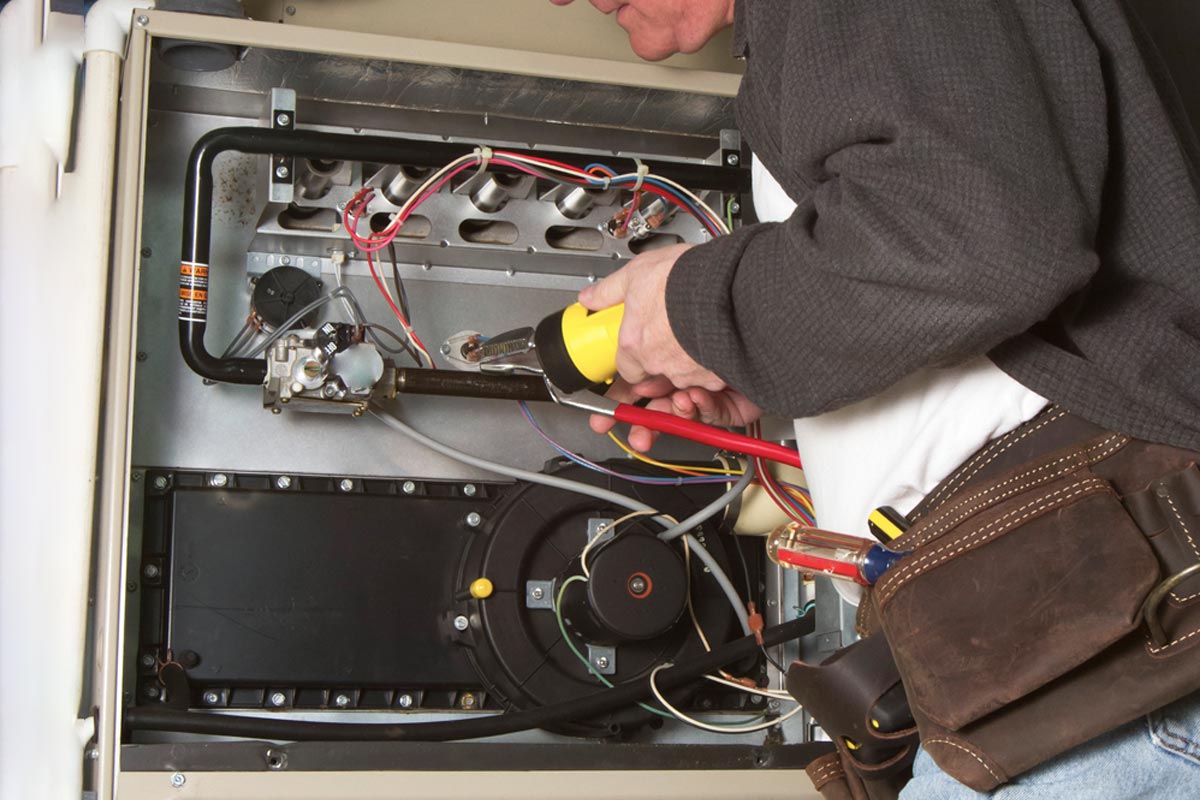In colder climates, nothing's more worrying than facing a furnace lockout. It's cold in the house, and you can't seem to figure what to do. Where would you look in the first place to solve the problem? Furnaces can lockout a for a few reasons. So, if you're wondering what to do, we've researched the matter for you!
Two types of lockouts can happen with a furnace—a soft and a hard lockout. Soft lockouts refer to the situation where your furnace will let you attempt to start it again. If it fails to ignite, the furnace will go into a hard lockout. In this case, a manual reset will be required, which an HVAC professional should do. Furnaces can go into lockout because of four reasons:
- Flame sensors
- Faulty igniters
- Obstruction in vents
- Dirty air filters
Of course, there are more details to discuss. Now that you know the three causes of a furnace lockout, you'll need to also learn about the next steps to take. Additionally, if you have a hard lockout, you'll need to know what you can do to reset the furnace. It isn't a complex issue if you go in with an idea of what to do. To learn more about the situation, keep reading ahead.

Why Does My Furnace Keep Going To Lockout?
Before we get into the details, you'll most likely want to know why your furnace is locking out. In some cases, your furnace won't allow you to turn it on again. In this situation, you're likely facing a hard lockout.
However, if you didn't repeatedly attempt turning it on, there are a few more attempts before it goes into a hard lockout.
When you're still allowed attempts at turning it on, you're experiencing a soft lockout, meaning you should avoid trying again—or you or an HVAC professional will have to perform a manual reset.
If you're wondering how many attempts you have, it will depend on the furnace. In general, there will be three attempts. Depending on your situation, you'll have one or two more tries before it requires a reset.
Now let's get into the four reasons for the lockout:
- Flame sensors
- Faulty igniters
- Obstruction in vents
- Dirty air filters
Flame Sensors
The first component that might give you problems is the flame sensors. If you don't know what they do, flame sensors are an essential safety measure for your furnace. It works by detecting a flame's presence.
During the combustion process, the sensor sends out a current to detect the presence of heat. If it detects a flame, the operation will continue. However, if it detects nothing for more than 10 seconds, it will shut down. It will allow you to attempt to turn the furnace on two more times.
Once it fails to detect a flame three times, it will shut down the control board and lock out the system. So, if all components in the furnace are in working order, a faulty sensor is what could be preventing you from turning it on.
Read more: Do Electric Furnaces Have Flame Sensors?
The Fix
Depending on how often you maintain the furnace, it could be that it needs a cleaning. If you haven't kept up with cleaning, it could have become oxidized. In other cases, it will have a carbon buildup. Regardless, both will inhibit a sensor's ability to work correctly.
There are few signs to check for if a sensor has gone bad. Check the burners of your furnace. If they go out after a few seconds, it can indicate the sensor isn't working correctly.
The second check to perform is visual observation. The sensor is a short and thin metal rod. Here are three signs to look for:
- Covered in soot—if you see soot covering the flame sensor, you need to clean it.
- The tip—once you've cleared the sensor but the tip is completely black, you'll need to call an HVAC professional to clean it up.
- Porcelain casing—cracks on the porcelain casing mean you'll need to replace the sensor. As some suggest, the porcelain casing acts as an insulator. It keeps the sensor from getting grounded onto the bracket of the furnace.
Faulty Igniter
If the sensors are not the problem, we'll have to observe the component it keeps in check. The igniter sparks the combustion process. If it doesn't produce a spark, there's no flame. With no flame, the sensors will shut down the system.
In this case, you'll have to check for any problems with the igniter. The first way is through visual observation. If the component is singed or cracked, it might have burned out.
To confirm this is the case, you'll have to remove the igniter from the furnace. You can do so by shutting off the furnace. Then, you can remove the igniter itself. Make sure not to touch the metal part.
From here, perform a continuity test. You will need the help of a multimeter.
The Fix
Once you've tested for continuity, you'll know what to do next. If it shows a continuous electrical path, the igniter is not the problem. However, if it shows no continuity, it will need to be replaced. For additional help, here's a YouTube video on how to test the igniter:
Dirty Air Filters and Obstruction in the Vents
Should the first two parts above be in working order, you'll have to move to the air filters and vents. This situation will focus more on a component called the limit switch. It's in charge of monitoring fuel pressure and the internal temperature of the heat exchanger.
Regarding furnace lockouts, if the internal temperature of the heat exchanger is too high, the switch closes. In other words, it will force your furnace to go into lockout mode. To maintain temperature, the heat exchanger needs adequate airflow.
So, you'll need to clean or replace dirty air filters. As some suggest, you'll need to change 1-2 inch filters every 1-3 months. For 3-4 inch air filters, you'll need to replace them every 6-9 months. In addition, check the vents to make sure nothing is blocking the airflow.
How Do I Reset My Furnace?

Regardless of what you might find, you'll need to reset the furnace if you want it to work again. Start by shutting off the power. Depending on how old your furnace is, you might not have to do this step. Locate the switch on your furnace. It looks like a typical light switch. Flip it off.
Now move on to the furnace's breakers. Go to your home's fuse box and turn off all electricity for the room. From here, you can move on to accessing the pilot light. There will be an access panel that you will need to remove.
Turn the gas control valve off and let it dissipate for 5 minutes. After 5 minutes, turn it back on. As some HVAC professionals suggest, do not let it build up longer than 5 minutes.
Depending on your furnace, you might have to reignite the pilot light using a barbecue lighter. New models will not have to do this. Now, you can go ahead and turn on the power and the gas supply to the furnace. Finally, you can hit the reset button—usually red or yellow—for 30 seconds.
If everything is in working order, it should operate correctly. However, if it's still giving you problems, consult an HVAC professional's help.
How Many Times Can I Hit the Reset Button on My Furnace?
The reset button is a safety measure for the furnace. So, you should also treat it as one. In other words, it should not be pressed multiple times. As some suggest, you shouldn't hit the reset button more than twice. Doing so can result in an explosion for oil furnaces.
How Long Does It Take for a Furnace To Reset?
If you know what you're doing, resetting the furnace should take around 10 minutes. Otherwise, it could take up to half an hour to do the whole process.
What Would Cause a Furnace Not To Kick On?
Of course, you might run into a situation where the steps above won't work. In other cases, everything is working as intended, but the furnace is still not kicking on. What would cause this?
You'll need to check other components outside of the furnace. Some problems that could be the cause are:
- The thermostat
- The power to the furnace
- Condensation problems
- Blower motor issues
- Insufficient fuel supply
At some point in the troubleshooting, it might be a wise choice to seek the guidance of professionals. This way, they can accurately pinpoint what is causing your furnace headaches.
Final Takeaway

Having a home with no heat in the cold winter months is a problem that needs to be addressed immediately. Of course, you can troubleshoot it yourself. But, should you fail to diagnose the issue, it might be time to get a professional's help. Regardless, we hope you found the information above helpful.
Before you go, do you need help resetting a specific model of a furnace? We have some information on resetting a Trane electric furnace. To learn more, check out this post: How To Reset A Trane Electric Furnace
Do you own a Goodman furnace? If it has trouble igniting, we can help find the cause. If you'd like to learn more, check out this post: Goodman Furnace Does Not Ignite - What Could Be Wrong
Until next time - good luck troubleshooting!
